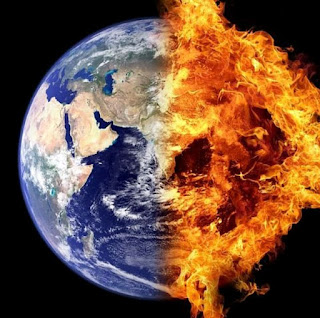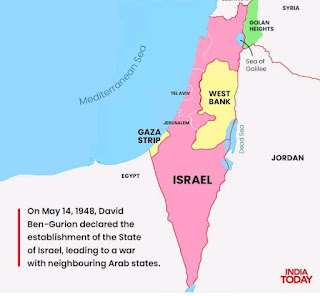End Times Prophecies and the Rebuilding of the Third Temple: A Biblical Perspective
The Significance of Israel:
The world has taken a keen interest in the signs and warnings emanating from Israel concerning the end of the world as we know it. One reason for this keen attention lies in Israel's unique status as the epicenter of three major world religions: Christianity, Islam, and Judaism. The city of Jerusalem, the proclaimed capital of Israel, holds unparalleled importance to the followers of these faiths, with profound implications for their religious doctrines and practices.
Christianity:
For Christians, Jerusalem is indelibly linked to the life, ministry, crucifixion, death, and resurrection of Jesus Christ. The Church of the Holy Sepulchre in the heart of the Old City of Jerusalem is revered as the site of Jesus's crucifixion and burial, making it one of the holiest places for Christians worldwide. Jerusalem's historic and spiritual significance is further underscored by the presence of numerous Christian denominations, each with its essential religious sites and churches.
Islam:
In Islamic tradition, Jerusalem ranks as the third holiest city, following Mecca and Medina. The Al-Aqsa Mosque, nestled within the ancient precincts of Jerusalem, is considered the third holiest site in Islam. The Dome of the Rock, an iconic shrine adorned with a glistening golden dome, is believed to mark the very spot where the Prophet Muhammad ascended to the heavens during the miraculous Night Journey.
Judaism:
Jerusalem holds an unparalleled sacred place in Judaism. It stands as the very epicenter of Jewish identity and religious practice. The Temple Mount, occupying a central position in Jerusalem, is the holiest site in Judaism and carries immense religious significance. This site, once the location of the ancient Jewish temples, has particular resonance in Jewish tradition. It is here that the First Temple, built by King Solomon, and the Second Temple, including Herod's reconstruction, stood as the central places of worship for the Jewish people.
Challenges and Aspirations for the Third Temple:
The aspiration for the reconstruction of the Third Temple forms a central theme in the current discourse surrounding eschatological beliefs and prophetic visions. The fundamental concept revolves around the expectation of a future Messianic era when the temple will be rebuilt, and the attendant worship practices will be reinstated. However, it is crucial to note that the endeavor to construct the Third Temple remains a matter of theological interpretation and presents a topic of fervent debate among different Jewish groups.
Some Orthodox and traditionalist Jews maintain a firm belief in the literal rebuilding of the temple, while others adopt a symbolic or metaphorical interpretation. For the latter group, the Third Temple represents spiritual redemption rather than the actual reconstruction of a physical edifice.
Moreover, the prospect of reconstructing the Third Temple is mired in complex political intricacies, notably relating to the Temple Mount, a site of profound significance to multiple religious groups. The presence of the Al-Aqsa Mosque and the Dome of the Rock adds an extra layer of complexity to any potential physical reconstruction.
The Enigma of the Red Heifer:
Preparations for the Third Temple entail addressing specific ritual requirements, among them, the enigmatic Red Heifer. This enigmatic cow, described in biblical texts, must be entirely red, with unblemished attributes. It plays a pivotal role in specific purification rituals and, therefore, holds a sacred place within Jewish tradition. Procuring a Red Heifer that meets the stringent biblical criteria is an exceptionally rare occurrence.
Efforts have been made to address this challenge, including importing Red Angus cows to Israel and using frozen embryos to potentially produce an unblemished Red Heifer. The successful birth of a Red Heifer calf in Israel marked a significant development, although many complexities still surround its use in temple rituals.
The Relevance of Armageddon:
Armageddon, often associated with the end of the world, is a concept that bears further examination. Contrary to popular belief, Armageddon does not signify the end of the world itself but serves as the climax of contemporary civilization. It symbolizes the ultimate battle between Earthly nations and celestial forces. Instead of signifying the apocalypse, it is a reminder of the importance of leading a life rooted in faith and righteousness in readiness for the ultimate judgment of God Biblical prophecies and signs, such as wars, natural disasters, the emergence of false prophets, and the influence of false teachings, have kindled a growing acceptance of the imminent return of Jesus Christ and the need for personal repentance and spiritual renewal. This heightened sense of urgency and anticipation has also fueled discussions about Armageddon.
The fate of the Third Temple remains a subject of considerable theological, political, and practical challenges. The desire to rebuild the temple is a testament to its enduring significance in religious beliefs. Whether the reconstruction of the Third Temple would herald Armageddon is a matter of diverse theological interpretations and continues to be a subject of intense religious debate. The interplay of biblical prophecies, theological beliefs, and real-world complexities creates a unique and captivating narrative that underscores the profound interconnection of faith, history, and the future.




Good writing with every perspective u mop up... Keep the good work up.
ReplyDeleteNice bro
ReplyDelete